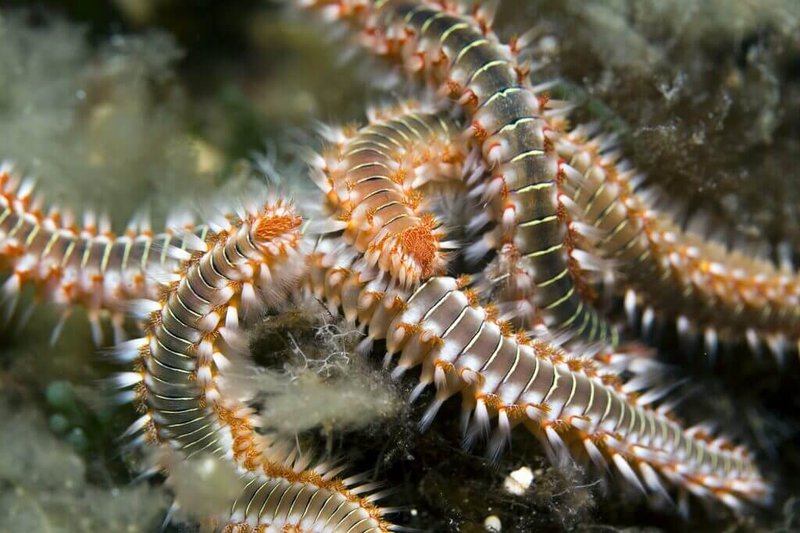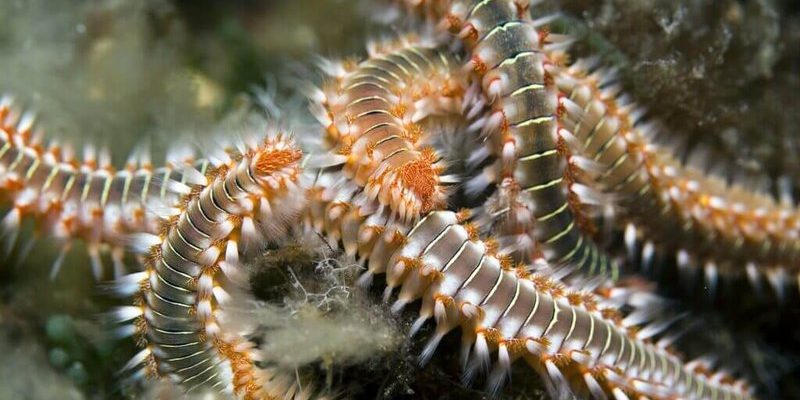
Imagine bristle worms as the unsung heroes and villains of the underwater world; they can either break down waste and recycle nutrients or wreak havoc in your tanks. Knowing how to spot the nasty ones can save your aquatic plants and fish from unnecessary harm. If you’re brand new to the world of marine life, don’t worry! We’ll break this down step by step so that you feel like a pro by the end.
What Are Bristle Worms?
Bristle worms, belonging to the class Polychaeta, are segmented worms found in oceans worldwide. They come in various shapes, sizes, and colors, making some of them quite beautiful to look at. Typically, they’ll show up in your marine tank as long, wiggly creatures with a multitude of bristles along their sides. These bristles, or chaetae, are what give them their name.
You might be wondering why they matter. Healthy bristle worms can actually help keep your aquarium clean by feeding on decaying matter, which in turn helps to maintain water quality. However, not all bristle worms are beneficial. Some species can multiply rapidly and consume valuable resources or even prey on your fish and corals.
Identifying the Safe Bristle Worms
Okay, so how do you know which bristle worms are allies? Generally, the harmless ones showcase distinctive features.
- Color: Safe bristle worms are often bright or muted in color, like red, orange, or brown.
- Size: They typically range from a few inches to about a foot long.
- Behavior: These worms are generally reclusive, often hiding in the substrate or behind rocks during the day and coming out at night.
When you look closely, you’ll notice that their bristles are feather-like and less aggressive. One common type you might come across is the Amphinoe species, which is known for being harmless and even attractive!
Recognizing the Pest Species
Now, let’s get to the bristle worms you definitely want to watch out for. Pest species, like the *Eunice* or *Hermodice*, can look similar to their beneficial counterparts. Here’s how to identify them:
- Color: They are often more muted and may appear darker or dull.
- Size: Pest bristle worms can grow much larger, sometimes exceeding a foot long.
- Bristles: Their bristles are more pronounced and aggressive, often resembling tiny needles.
Pest worms tend to be more aggressive and can come out during the day, often appearing in areas where food is plentiful. If you see them near your precious corals or fish, that’s a red flag!
Behavioral Traits of Bristle Worms
Beyond the physical characteristics, behavior can also clue you in on whether a bristle worm is a pest or a pal. Harmless bristle worms tend to mind their own business, scavenging for food and staying hidden. In contrast, pest species can be quite bold and aggressive.
For example, if you notice one worm consistently lurking around your fish, especially during feeding times, that could be a sign of trouble. They may start raiding nests or even eating smaller fish if they feel threatened or hungry enough. It’s like having an unwanted house guest who overstays their welcome!
How to Manage Pest Bristle Worms
If you find yourself with an unwanted bristle worm population, don’t panic! There are several strategies to manage them effectively.
- Manual Removal: This can be as simple as using tweezers to pull them out. Just be careful—they can bite!
- Trap Them: You can set up traps using bait like shrimp to lure them in. Once they’re caught, you can remove them from your tank.
- Natural Predators: Certain fish and invertebrates naturally prey on bristle worms. Consider adding them to your aquarium if it’s safe for your other inhabitants.
Keep in mind, prevention is always better than cure. Regular tank maintenance and monitoring can help keep pest populations under control before they become a bigger issue.
Differences Between Marine and Freshwater Bristle Worms
It’s essential to know that bristle worms aren’t just limited to the ocean. They exist in freshwater as well. However, the focus here is primarily on marine bristle worms, as they are most commonly encountered in hobbyist aquariums.
Freshwater bristle worms, like those found in ponds or rivers, tend to be less aggressive and more docile. They also play a vital role in the ecosystem, breaking down organic material but are less of a concern for aquarium enthusiasts.
When it comes to marine tanks, the stakes are higher because the environment is more controlled, meaning imbalances can quickly lead to problems. It’s always a good idea to research the specific bristle worms you may encounter based on your water type—marine or freshwater.
Why Monitoring Bristle Worm Populations Matters
You might be thinking, “Why should I care so much about bristle worms?” Well, monitoring these creatures is crucial for maintaining the health of your aquarium.
An increasing population of pest bristle worms can lead to overconsumption of resources, causing a ripple effect that impacts fish health, plant life, and overall water quality. By keeping an eye on their numbers, you can ensure a balanced ecosystem that benefits every creature in your tank.
Regular checks and maintenance can prevent those little nuisances from turning into major headaches. This way, you ensure that your underwater world remains vibrant and thriving.
In conclusion, whether you’re new to aquariums or a seasoned pro, understanding how to spot pest species of bristle worms can help you maintain a healthy environment for your aquatic friends. Remember, the key is to monitor, identify, and manage these creatures effectively! With a little care and attention, you can keep your tank thriving and prevent those pesky pests from taking over. Happy fish keeping!

